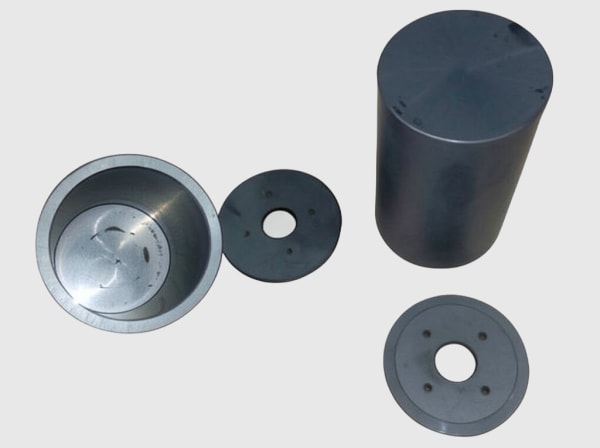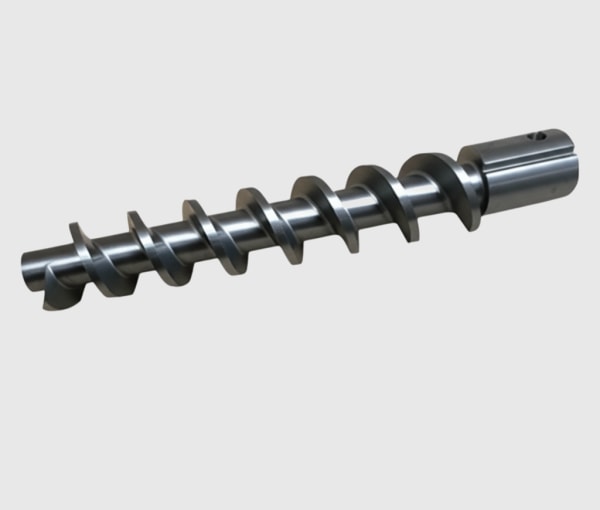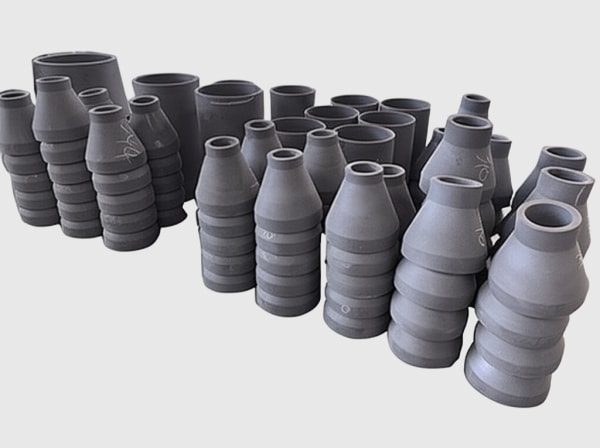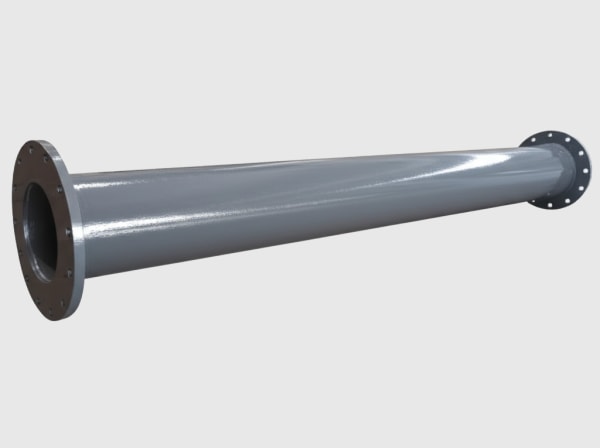SiC in Heavy Machinery: Reliability Redefined
Introduction: The Unyielding Strength of Silicon Carbide in Demanding Industrial Applications
In the world of heavy machinery, operational demands are relentless. Equipment used in mining, construction, agriculture, and large-scale manufacturing faces extreme conditions: abrasive materials, high temperatures, corrosive environments, and immense mechanical stress. Downtime is not just an inconvenience; it’s a significant financial drain. For engineers, procurement managers, and technical buyers in these sectors, identifying materials that can withstand such rigors and extend component lifespan is paramount. Enter Silicon Carbide (SiC), an advanced technical ceramic that is rapidly becoming the gold standard for high-performance industrial applications. Custom silicon carbide products are not just components; they are essential engineering solutions designed to deliver unparalleled reliability and efficiency where traditional materials falter. This blog post will delve into the transformative impact of SiC on heavy machinery, exploring its applications, benefits, and crucial considerations for its adoption.
Silicon Carbide, a synthetic compound of silicon and carbon, is renowned for its exceptional hardness, nearing that of diamond. Its unique combination of properties – superior wear resistance, high thermal conductivity, excellent thermal shock resistance, chemical inertness, and strength retention at elevated temperatures – makes it an ideal candidate for the most challenging heavy machinery components. As industries push the boundaries of production and efficiency, the need for materials that can keep pace is critical. Custom SiC parts, engineered to specific application requirements, offer a pathway to enhanced productivity, reduced maintenance cycles, and a lower total cost of ownership, truly redefining what reliability means in the context of heavy industrial equipment.
Key Applications: Where SiC Excels in Heavy Machinery
The versatility and robustness of Silicon Carbide allow its use in a wide array of heavy machinery applications, significantly improving performance and longevity. These components are often subjected to intense wear, high loads, and extreme temperatures, making SiC an ideal material solution. Here are some key areas where custom SiC parts are making a substantial difference:
- Mining and Mineral Processing:
- Slurry Pump Components: Impellers, liners, volutes, and sleeves made from SiC exhibit exceptional resistance to abrasive slurries, extending pump life and reducing maintenance in mineral extraction and transport.
- Cyclone Separators: Liners and apex finders in cyclones benefit from SiC’s wear resistance, maintaining separation efficiency for longer periods.
- Chute Liners and Hoppers: High-wear areas in material handling systems are protected by SiC tiles and liners, preventing abrasion and ensuring smooth material flow.
- Nozzles for Abrasive Blasting and Cutting: SiC nozzles maintain their orifice size and shape far longer than steel or tungsten carbide when handling abrasive media.
- Construction and Earthmoving Equipment:
- Seals and Bearings: Mechanical seals, thrust bearings, and journal bearings in pumps, mixers, and hydraulic systems benefit from SiC’s low friction, high wear resistance, and ability to operate in poorly lubricated conditions.
- Concrete Pumping Components: Parts like pipeline elbows, reducers, and valve components in concrete pumps endure severe abrasion, a challenge SiC readily meets.
- Wear Plates: For excavators, bulldozers, and graders, SiC wear plates on buckets, blades, and other ground-engaging tools can dramatically increase service life.
- Agricultural Machinery:
- Tillage Components: Points, shares, and discs on ploughs and cultivators face abrasive soil conditions. SiC inserts or coatings can enhance their durability.
- Harvester Components: Cutting blades and wear-resistant guides in harvesting equipment can benefit from SiC’s properties.
- Seeder and Fertilizer Spreader Parts: Components handling seeds and corrosive fertilizers can achieve longer life with SiC.
- Industrial Manufacturing and Processing:
- High-Temperature Furnace Components: Beams, rollers, supports, and burner nozzles in industrial furnaces operating at extreme temperatures leverage SiC’s thermal stability and strength.
- Fluid Handling Systems: Valve components (balls, seats, liners), pump shafts, and impellers handling corrosive or abrasive fluids in chemical processing or power generation.
- Grinding and Milling Media: While not heavy machinery *components* themselves, SiC is used as grinding media in heavy-duty mills due to its hardness.
- Oil and Gas Exploration and Production:
- Downhole Tool Components: Parts in drilling motors, MWD/LWD tools, and valves exposed to abrasive drilling muds and high pressures.
- Pump Components in Refineries: Handling corrosive and hot hydrocarbons.
The integration of SiC into these applications translates directly into reduced downtime, lower maintenance costs, and enhanced operational efficiency for heavy machinery operators. Explore a range of SiC solutions and proven applications tailored for these demanding sectors.
Why Choose Custom Silicon Carbide for Heavy Machinery Components?
While standard ceramic parts offer some advantages, heavy machinery often presents unique challenges that necessitate custom-engineered solutions. Opting for custom Silicon Carbide components provides a multitude of benefits specifically tailored to the arduous environments these machines operate in, addressing limitations faced by off-the-shelf metallic or even generic ceramic parts. The primary drivers for choosing custom SiC include unparalleled thermal resistance, exceptional wear resistance, and superior chemical inertness, along with the ability to optimize design for specific operational stresses.
Key Advantages of Customization:
- Optimized Performance for Specific Conditions: Heavy machinery rarely operates in a ‘one-size-fits-all’ environment. Customization allows for the selection of the most appropriate SiC grade (e.g., Reaction Bonded SiC for complex shapes and good thermal shock, or Sintered SiC for ultimate hardness and chemical purity) based on the precise nature of the abrasive material, the operating temperature range, the type of chemical exposure, and the mechanical loads involved. This ensures the component performs optimally for its intended purpose.
- Enhanced Wear Resistance: Custom designed SiC parts can be shaped to maximize resistance in critical wear areas. This might involve thicker sections, specific surface profiles, or integration features that protect vulnerable points in an assembly. This tailored approach extends the life of not just the SiC component but the entire machine by reducing wear-related failures.
- Superior Thermal Management: Heavy machinery components, such as engine parts or exhaust systems, can experience extreme temperatures and rapid thermal cycling. Custom SiC parts can be designed to manage these thermal stresses effectively, leveraging SiC’s high thermal conductivity and excellent thermal shock resistance. This prevents premature failure due to cracking or deformation.
- Complex Geometries and Tight Integration: Modern heavy machinery often involves intricate designs with limited space. Custom SiC manufacturing allows for the creation of complex shapes and features that can be seamlessly integrated into existing assemblies. This includes precise interfaces for joining with metallic components, accounting for differences in thermal expansion.
- Improved Chemical Inertness: In applications like chemical processing or certain mining operations, components are exposed to highly corrosive substances. Custom SiC parts, particularly those made from high-purity grades, offer exceptional resistance to a wide range of acids and alkalis, even at elevated temperatures, preventing material degradation and contamination.
- Reduced Total Cost of Ownership (TCO): While the initial investment in custom SiC components might be higher than traditional materials, the extended lifespan, significantly reduced maintenance requirements, minimized downtime, and improved operational efficiency lead to a substantially lower TCO over the component’s life cycle.
- Weight Reduction: SiC has a lower density compared to many metals like steel or superalloys. In applications where weight is a concern (e.g., rotating parts or aerospace-related heavy equipment), custom SiC components can contribute to weight savings, potentially improving fuel efficiency or payload capacity.
By working with a knowledgeable supplier, businesses can leverage custom SiC solutions to achieve a level of performance and durability previously unattainable with standard parts, directly impacting their bottom line through increased uptime and productivity.
Recommended SiC Grades and Compositions for Heavy-Duty Applications
Selecting the appropriate grade of Silicon Carbide is crucial for optimizing performance and cost-effectiveness in heavy machinery applications. Different manufacturing processes yield SiC materials with varying microstructures and property profiles. Understanding these differences allows engineers and procurement specialists to choose the best fit for their specific needs, balancing wear resistance, thermal capabilities, mechanical strength, and economic factors.
Here are some commonly recommended SiC grades for heavy-duty applications:
-
Reaction-Bonded Silicon Carbide (RBSiC or SiSiC):
- Manufacturing: Produced by infiltrating a porous carbon preform with molten silicon. The silicon reacts with some of the carbon to form SiC, and the remaining pores are filled with metallic silicon.
- Properties: Contains typically 8-15% free silicon. Offers excellent wear and abrasion resistance, good thermal shock resistance, high thermal conductivity, and maintains strength at moderately high temperatures (up to ~1350°C, limited by the melting point of silicon). Relatively easier to produce in complex shapes with tight tolerances.
- Heavy Machinery Applications: Slurry pump parts, cyclone liners, nozzles, wear liners, kiln furniture, rollers. Ideal for applications requiring intricate designs and good overall performance where extreme chemical purity isn’t the primary concern.
-
Sintered Silicon Carbide (SSiC):
- Manufacturing: Made from fine SiC powder with sintering aids, pressed into shape, and then sintered at very high temperatures (typically >2000°C) in an inert atmosphere.
- Properties: Very high purity (typically >98-99% SiC). Exhibits superior hardness, excellent corrosion resistance against a wide range of chemicals (including strong acids and bases), high strength at extreme temperatures (up to 1600°C or higher), and good wear resistance. Can be more challenging to machine into complex shapes.
- Heavy Machinery Applications: Chemical pump seals and bearings, valve components for corrosive fluids, high-temperature heat exchanger tubes, advanced burner nozzles, semiconductor processing equipment components (though less for “heavy machinery” in the traditional sense, some high-tech industrial machinery benefits). Best for the most demanding wear, corrosion, and high-temperature environments.
-
Nitride-Bonded Silicon Carbide (NBSiC):
- Manufacturing: SiC grains are bonded by a silicon nitride (Si3N4) phase.
- Properties: Offers good thermal shock resistance, high strength, and good wear resistance. Generally more cost-effective than SSiC for certain applications. Good resistance to molten non-ferrous metals.
- Heavy Machinery Applications: Kiln furniture for firing ceramics and metals, components for aluminum smelters, thermocouple protection tubes, some types of wear liners. Suited for applications requiring good thermal cycling stability and wear resistance at a moderate cost.
-
Recrystallized Silicon Carbide (RSiC):
- Manufacturing: SiC grains are self-bonded at very high temperatures without sintering aids, resulting in a porous structure.
- Properties: Excellent thermal shock resistance due to its interconnected porosity, very high-temperature stability (can be used above 1650°C), and good strength. Porosity can be a disadvantage for wear or liquid corrosion unless sealed.
- Heavy Machinery Applications: High-temperature kiln furniture (beams, plates, setters), burner nozzles, radiant tubes. Primarily for high-temperature structural applications where direct abrasive wear is not the main concern or where porosity is beneficial for thermal shock.
Comparison of Common SiC Grades for Heavy Machinery:
| Property | Reaction-Bonded SiC (RBSiC) | Sintered SiC (SSiC) | Nitride-Bonded SiC (NBSiC) | Recrystallized SiC (RSiC) |
|---|---|---|---|---|
| Typical SiC Content | 85-92% (with free Si) | >98% | ~70-80% SiC (with Si3N4 binder) | >99% (porous) |
| Max. Operating Temp. | ~1350°C | ~1600-1800°C | ~1400-1550°C | ~1650-1900°C |
| Hardness (Knoop) | ~2500-2800 | ~2600-2900 | ~2200-2500 (matrix dependent) | ~2300-2600 (grain dependent) |
| Flexural Strength (RT) | 250-400 MPa | 400-550 MPa | 150-350 MPa | 50-150 MPa (can be higher with specific treatments) |
| Thermal Shock Resistance | Good to Excellent | Good | Very Good | Excellent |
| Corrosion Resistance | Good (Si phase can be attacked by certain chemicals) | Excellent | Good to Very Good | Good (affected by porosity) |
| Relative Cost | Moderate | High | Moderate to High | Moderate to High |
| Typical Heavy Machinery Uses | Wear parts, nozzles, pump components, complex shapes | High-purity seals, bearings, extreme wear/corrosion parts | Kiln furniture, metal contact parts, thermal shock applications | High-temp furnace parts, setters, burners |
Choosing the right SiC grade involves a careful analysis of the application’s mechanical, thermal, chemical, and economic requirements. Consultation with experienced silicon carbide specialists can guide this selection process, ensuring optimal material choice for maximum reliability and longevity in heavy machinery.
Design Considerations for SiC Products in Heavy Machinery
Designing components with Silicon Carbide for heavy machinery requires a different approach than designing with traditional metals. SiC’s unique properties, particularly its hardness and brittleness, necessitate careful consideration during the design phase to ensure manufacturability, structural integrity, and optimal performance in demanding service conditions. Effective design not only maximizes the benefits of SiC but also mitigates potential failure modes associated with ceramics.
Key design considerations include:
- Managing Brittleness:
- Avoid Sharp Corners and Edges: Sharp internal and external corners act as stress concentrators. Generous radii and chamfers should be incorporated to distribute stress more evenly.
- Minimize Tensile Stresses: Ceramics are much stronger in compression than in tension. Designs should aim to keep SiC components under compressive loads wherever possible.
- Impact Resistance: While some SiC grades have better impact toughness than others, SiC is generally more susceptible to impact damage than metals. Design considerations might include shielding the SiC component, using compliant interlayers, or designing for easy replacement if impacts are unavoidable.
- Geometry and Manufacturability:
- Simplicity: While complex shapes are possible, especially with RBSiC, simpler geometries are generally more cost-effective to manufacture and less prone to internal stresses during processing.
- Wall Thickness: Extremely thin walls can be fragile and difficult to manufacture consistently. Minimum wall thickness depends on the overall size of the component and the specific SiC grade but should be discussed with the manufacturer. Uniform wall thickness is preferred to avoid differential shrinkage and stress during sintering.
- Aspect Ratios: Very long, slender parts or parts with high aspect ratios can be challenging to produce without warping or cracking.
- Draft Angles: For pressed parts, draft angles may be necessary to facilitate ejection from molds.
- Tolerances and Machining:
- As-Sintered vs. Machined Tolerances: Understand the achievable tolerances for as-sintered parts versus parts that require post-sintering diamond grinding. Machining adds cost but allows for much tighter tolerances. Specify tight tolerances only where absolutely necessary.
- Surface Finish: Specify the required surface finish based on the application (e.g., smooth surfaces for seals, specific roughness for wear interfaces).
- Joining and Assembly:
- Thermal Expansion Mismatch: SiC generally has a lower coefficient of thermal expansion (CTE) than metals. When SiC parts are assembled with metallic components, this CTE mismatch must be accommodated in the design to prevent stress buildup during thermal cycling. This can involve using compliant interlayers, specific mechanical clamping methods, or brazing with specialized alloys.
- Attachment Methods: Consider how the SiC component will be attached or integrated. Options include mechanical fastening (clamping, bolting with care), interference fits (shrink fitting), brazing, or adhesive bonding (for lower temperature applications). The design should incorporate features suitable for the chosen assembly method.
- Load Distribution: Ensure that loads are distributed evenly onto SiC components. Point loads can lead to high localized stresses and fracture. Use compliant gaskets or pads if necessary.
- Stress Analysis:
- Finite Element Analysis (FEA): For critical applications or complex geometries, performing FEA is highly recommended. This helps identify high-stress regions and allows for design optimization before manufacturing, considering SiC’s specific material properties (e.g., Weibull modulus for failure probability).
- Environmental Factors:
- Operating Temperature Extremes and Cycling: Select a grade with appropriate thermal shock resistance and high-temperature strength.
- Corrosive Media: Ensure the chosen SiC grade (e.g., SSiC for aggressive chemicals) is compatible with the chemical environment.
- Abrasive Nature of Media: Factor in the particle size, hardness, and velocity of abrasive materials the component will encounter.
Early collaboration between the end-user’s design team and the SiC manufacturer’s technical experts is crucial. This collaborative approach ensures that the design is optimized for both performance and manufacturability, leading to reliable and cost-effective SiC components for heavy machinery.
Tolerance, Surface Finish & Dimensional Accuracy for SiC Parts
Achieving the correct tolerances, surface finish, and overall dimensional accuracy is critical for the successful integration and performance of Silicon Carbide components in heavy machinery. Given SiC’s extreme hardness, shaping and finishing these materials require specialized techniques, primarily diamond grinding and lapping. Understanding the capabilities and limitations of these processes helps in specifying realistic and cost-effective requirements.
Dimensional Tolerances:
- As-Sintered Tolerances: Components produced through processes like pressing and sintering (e.g., SSiC, NBSiC) or reaction bonding (RBSiC) will have “as-sintered” or “as-fired” tolerances. These are generally wider due to shrinkage variations during the high-temperature processing. Typical as-sintered tolerances might range from ±0.5% to ±2% of the dimension, depending on the SiC grade, size, and complexity of the part. For instance, RBSiC often offers better as-sintered dimensional control due to lower net shrinkage.
- Ground Tolerances: For applications requiring higher precision, post-sintering machining using diamond grinding is necessary. This process can achieve significantly tighter tolerances.
- Standard Ground Tolerances: Typically in the range of ±0.025 mm to ±0.05 mm (±0.001″ to ±0.002″).
- Precision Ground Tolerances: With more rigorous grinding processes, tolerances as tight as ±0.005 mm to ±0.01 mm (±0.0002″ to ±0.0004″) can be achieved on critical dimensions. Extremely tight tolerances (e.g., below ±0.002 mm) are possible but significantly increase cost and should only be specified if absolutely essential for functionality.
- Geometric Tolerances: Beyond linear dimensions, geometric dimensioning and tolerancing (GD&T) such as flatness, parallelism, perpendicularity, roundness, and concentricity are often crucial for heavy machinery components like seals, bearings, and shafts. Diamond grinding can achieve high levels of geometric accuracy. For example, flatness values of a few light bands (microns) can be achieved on lapped surfaces.
Surface Finish:
The surface finish of an SiC component significantly impacts its performance, especially in wear and sealing applications.
- As-Sintered Surface: The surface finish of an as-sintered part is generally rougher and depends on the mold surface, grain size of the initial powder, and sintering process. Ra (average roughness) values might be in the range of 1 µm to 5 µm or more.
- Ground Surface: Diamond grinding improves the surface finish significantly. Typical ground surfaces can achieve Ra values between 0.2 µm and 0.8 µm. This is suitable for many dynamic wear applications.
- Lapped and Polished Surfaces: For applications requiring exceptionally smooth surfaces, such as mechanical seals or high-precision bearings, lapping and polishing operations are employed after grinding.
- Lapped Surfaces: Can achieve Ra values of 0.02 µm to 0.1 µm. These surfaces are very flat and provide excellent sealing faces.
- Polished Surfaces: Can achieve even finer finishes, sometimes down to Ra < 0.01 µm, resulting in a mirror-like appearance. This is typically for highly specialized applications.
Factors Influencing Achievable Accuracy and Finish:
- SiC Grade: The microstructure of the SiC grade (e.g., grain size, presence of secondary phases like free silicon in RBSiC) can influence machining characteristics and the ultimate finish achievable.
- Part Geometry and Size: Complex shapes, internal features, and very large or very small parts can present challenges in achieving uniform tolerances and finishes.
- Machining Process and Equipment: The type of diamond tooling, grinding machines, lapping compounds, and operator skill all play a vital role.
- Cost Implications: Tighter tolerances and finer surface finishes invariably lead to increased processing time and higher costs due to the difficulty of machining SiC. It’s essential to specify requirements that are truly necessary for the application to avoid over-engineering and excessive expense.
Clear communication of dimensional and surface finish requirements, ideally through detailed engineering drawings incorporating GD&T, is essential when ordering custom SiC components. Working with an experienced SiC manufacturer will help in determining what is practically achievable and optimal for a given heavy machinery application.
Post-Processing Needs for Enhanced Durability in Heavy Machinery
While Silicon Carbide inherently possesses exceptional hardness and wear resistance, certain post-processing steps can further enhance its durability, tailor its surface properties for specific interactions, or prepare it for assembly in heavy machinery. These processes are typically applied after the primary shaping (sintering/bonding) and initial machining stages.
Common post-processing steps for SiC components include:
- Precision Grinding:
- Purpose: As discussed previously, this is often a fundamental step rather than just an enhancement. It’s crucial for achieving precise dimensional tolerances, geometric accuracy (flatness, parallelism, roundness), and a suitable surface finish for mating parts.
- Process: Involves using diamond grinding wheels of various grits. Coarse grinding removes material quickly, while fine grinding achieves final dimensions and smoother surfaces.
- Benefit for Durability: Ensures proper fit and alignment, reducing stress concentrations and uneven wear that could occur with poorly dimensioned parts. A smoother surface can also reduce friction and initial wear rates in dynamic applications.
- Lapping and Polishing:
- Purpose: To achieve extremely flat and smooth surfaces, critical for applications like mechanical seals, high-performance bearings, or optical components (though less common in typical heavy machinery).
- Process: Lapping involves using a loose abrasive slurry (often diamond particles) between the SiC part and a lap plate. Polishing uses finer abrasives and specialized pads to achieve a mirror-like finish.
- Benefit for Durability: In sealing applications, lapped surfaces minimize leakage and wear, extending seal life. In bearings, ultra-smooth surfaces reduce friction, heat generation, and wear.
- Edge Honing/Chamfering:
- Purpose: To remove sharp edges and create small bevels or radii on component edges.
- Process: Can be done through controlled grinding, tumbling with media, or specialized honing techniques.
- Benefit for Durability: SiC is brittle, and sharp edges are prone to chipping during handling, assembly, or operation. Edge honing significantly reduces this risk, improving the component’s overall robustness and preventing small chips from becoming crack initiation sites.
- Cleaning and Surface Treatment:
- Purpose: To remove any contaminants, machining residues, or loose particles from the surface. Specialized surface treatments might be applied for specific functionalities, though less common for bulk SiC wear parts.
- Process: Ultrasonic cleaning, chemical etching (in specific cases and with care), or plasma treatments.
- Benefit for Durability: A clean surface is essential for proper bonding if adhesives or coatings are used. Removing surface flaws or contaminants can also improve fatigue life in some instances.
- Sealing (for porous grades):
- Purpose: Some SiC grades, like certain types of RSiC or more porous variants, might require sealing to reduce p
- Purpose: Some SiC grades, like certain types of RSiC or more porous variants, might require sealing to reduce p






